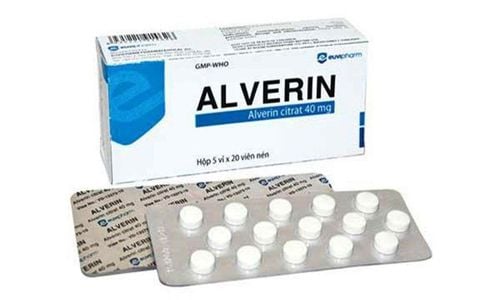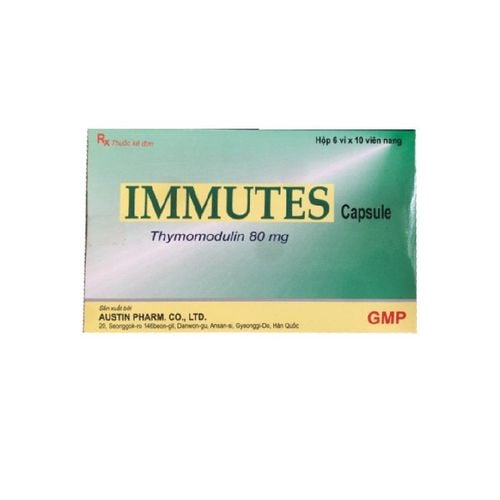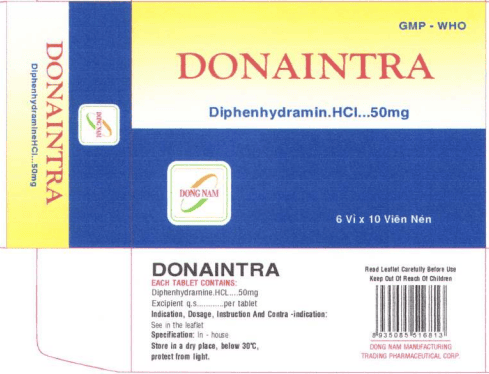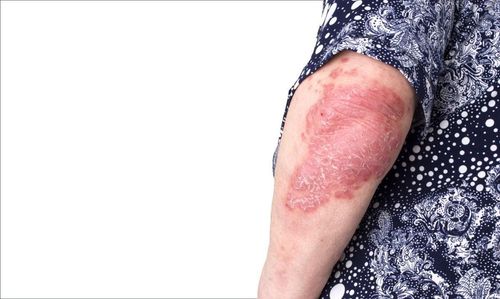This is an automatically translated article.
Celiac disease in children, wheat allergy, and gluten-sensitive children are often confused with each other, because they are all associated with an intolerance to wheat protein and many of the same symptoms. In fact, these are very different conditions and are controlled in separate ways.1. What is Celiac Disease in Children?
Celiac disease in children is an autoimmune disorder that affects the digestive system. When children get sick, the immune system reacts to gluten, destroying the lining of the small intestine. As a result, the baby's body cannot absorb nutrients from food due to damage to the small intestine, leading to malnutrition.Gluten is a protein found in foods containing:
Wheat Rye Barley . Celiac disease is one of the most common genetic disorders, affecting about 1 in 100 children. However, many people go undiagnosed. Scientists believe the disease is becoming more common, but it's not clear why.
Symptoms of Celiac disease in children can appear as early as about 6 months of age, when babies are introduced to solid foods containing gluten. However, symptoms may not be noticed until adulthood, and some children with celiac disease show no symptoms at all. The truth is that the majority of people with celiac disease go undiagnosed. If left untreated, Celiac disease in children can develop complications.
Your child is more at risk for celiac disease if:
A parent or sibling also has it Down syndrome Type 1 diabetes Selective IgA deficiency (immune system problem) Turner syndrome Williams syndrome Autoimmune thyroiditis.

Các triệu chứng bệnh Celiac ở trẻ em có thể xuất hiện sớm nhất vào khoảng 6 tháng tuổi
2. Symptoms and Complications of Celiac Disease in Children
Symptoms of celiac disease vary with age and also vary from child to child.2.1. Infants and Toddlers Vomiting Bloating Stomach Crying Poor growth Frequent gasping, farting Diarrhea with a bad smell. 2.2. School-age children and adolescents Abdominal pain Abdominal bloating Diarrhea Constipation Difficulty gaining/losing weight Delayed puberty Dermatitis. 2.3. Complications About 20% of people with celiac disease do not have any symptoms. Even without symptoms, your child can still suffer long-term health consequences if left untreated. Complications can include:
Iron deficiency anemia Malnutrition Weak bones Short stature Infertility Thyroid disease Multiple sclerosis Bowel cancer. So it's important to get tested if your child is at risk for celiac disease.

Thiếu máu do thiếu sắt là biến chứng có thể gặp phải ở trẻ bị bệnh Celiac
3. Distinguishing celiac disease, wheat allergy and gluten sensitivity
3.1. Celiac Disease Celiac disease is a serious, but treatable, autoimmune disorder. As long as gluten is completely avoided, children should not experience any symptoms or damage to the small intestine.3.2. Wheat allergy A wheat allergy involves another part of the immune system. If the child has an allergy, the child's immune system has identified the wheat proteins as the irritant. Whenever a child eats or breathes in substances that contain wheat, they have an allergic reaction, causing the body to release histamine.
Children with a wheat allergy have typical food allergy symptoms, such as:
Hives Swelling or itchy lips Rash Itching Wheezing Diarrhea Nausea Vomiting. Symptoms appear within minutes or hours of exposure to the irritant. In some cases, children with a wheat allergy can quickly become life-threatening.
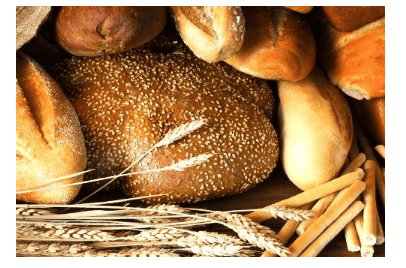
Dị ứng lúa mì liên quan đến một phần khác của hệ miễn dịch
There are studies that show that this syndrome is related to foods high in carbohydrates, the abbreviation is FODMAP. Milk, wheat, beans, some sweeteners, fruits and vegetables are carbs that tend to be hard to digest, can ferment in the gut and cause stomach upset in people with sensitivities.
4. Diagnosis and treatment
4.1. Diagnosis Ask your doctor if you suspect your child has celiac disease or another gluten-related problem. The pediatrician can:Check the health. Ask questions about symptoms and family history. Blood test to look for Celiac disease in children. To ensure accuracy, you continue to feed your child as usual. Don't rule out foods that contain gluten or wheat unless your doctor specifically tells you to. Skin prick tests, blood tests, or food tests if a wheat allergy is suspected. Children may be asked to eat a small amount of wheat under medical supervision and to be monitored for reactions. If your child's doctor suspects a problem with gluten, the doctor will order more blood tests and an endoscopy (passing a long thin tube through the mouth and stomach and into the small intestine to take a small tissue sample). If the sample shows damage to the small intestine, the child will be diagnosed with celiac disease. Gluten sensitivity is more difficult to diagnose. Currently, there are no tests of any kind. If your child has problems with gluten, but is negative for a wheat allergy and celiac disease, your doctor may diagnose gluten sensitivity. Your gastroenterologist will recommend trying a gluten-free or low-FODMAP diet. If your child's symptoms improve, the answer is more likely to be gluten sensitivity.
Many parents don't want their child to have a colonoscopy and only give them gluten-free food when they suspect they have it, but getting an accurate diagnosis is important. If your child has celiac disease, you'll need to manage your diet safely, and your doctor will also need to watch for intestinal damage and bone loss.
Celiac disease tends to run in families, so parents and siblings should also be screened.
| Bệnh celiac | Dị ứng lúa mì | Nhạy cảm với gluten |
|
Nếu con bạn đã được chẩn đoán mắc bệnh celiac, cần đảm bảo trẻ phải tránh tất cả các loại thực phẩm có chứa gluten trong thời gian dài. Sau khi loại bỏ gluten, các triệu chứng của bé sẽ dần biến mất và ruột non lành lại trong vòng vài tháng. Thật không may, mọi người không thể khỏi bệnh celiac hoàn toàn. Con bạn sẽ cần phải ăn kiêng nghiêm ngặt, không có gluten trong suốt cuộc đời. |
hông giống như bệnh celiac, nhiều trẻ bị dị ứng lúa mì có thể chịu được các loại ngũ cốc khác, như lúa mạch đen và đại mạch. Việc theo chế độ ăn không có lúa mì sẽ dễ dàng hơn một chút so với chế độ ăn kiêng nghiêm ngặt không có gluten. Hỏi bác sĩ chuyên khoa dị ứng về các loại thực phẩm mà con bạn có thể ăn an toàn. Hầu hết trẻ em sẽ hết dị ứng lúa mì khi đến tuổi trưởng thành. |
Không rõ liệu những trẻ nhạy cảm với gluten có cần tránh gluten nghiêm ngặt như những người bị bệnh celiac hay không. Trong khi tiếp tục nghiên cứu, các chuyên gia khuyến nghị rằng những bệnh nhân nhạy cảm với gluten nên phối hợp chặt chẽ với bác sĩ và chuyên gia dinh dưỡng để phát triển kế hoạch ăn uống cá nhân, giúp kiểm soát triệu chứng. Nhạy cảm với gluten có thể là một tình trạng tạm thời. Do đó, các chuyên gia khuyên bạn nên thử lại gluten sau 1 - 2 năm tuân thủ chế độ ăn không gluten. |
5. Foods containing gluten
To follow a gluten-free diet, children need to stay away from wheat, rye, and barley, as well as additives that may contain gluten. Most pasta, pizza, crackers, cereals, breads, and baked goods are made with these grains. Common gluten-containing ingredients include:Wheat varieties Wheat bran, wheat starch, wheat germ, broken, hydrolyzed wheat protein Barley Rye Small barley malt. Oats are naturally gluten-free, but many oat products are contaminated with gluten during processing. So kids can try oats that are labeled gluten-free. However, some celiac patients also cannot tolerate oats.
While the gluten-free diet has become mainstream in recent years, it doesn't necessarily apply if your child doesn't have celiac disease or a gluten disorder. Because babies can miss out on key nutrients, which are needed for healthy growth and development.
6. How to Build a Gluten-Free Meal
For many families, going gluten-free is a big lifestyle change. Here are some guidelines for parents.6.1. Learn to read food labels When shopping, check ingredients and avoid all grains that contain gluten. Be wary of processed foods. Gluten can be found in foods you wouldn't expect, such as store-bought stews and soups, soy sauce, processed meats (sausages and cold cuts), salad dressings, medications, vitamins and even Even lip balm.
6.2. Choose naturally gluten-free ingredients Breads and cookies that are labeled gluten-free are often more expensive and have added sugar, sodium, or fat to taste. Whole foods - like meat and poultry, fish, fruits, vegetables, most dairy and nuts are naturally gluten-free and healthy for your family.
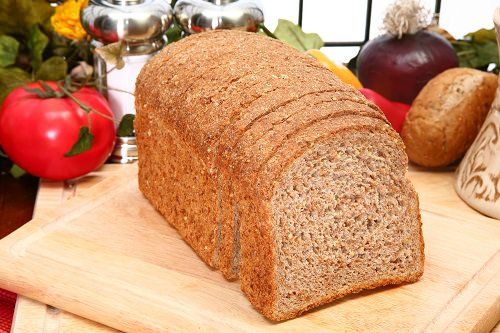
Bánh mì và bánh quy dán nhãn không chứa gluten thường đắt hơn và có thêm đường, natri hoặc chất béo để ngon miệng
6.4. Talk to the principal about school lunches Schools must make reasonable arrangements for children with celiac disease on a gluten-free diet or children at risk for a life-threatening allergic reaction to wheat. The doctor will provide a confirmation of your child's condition. However, if you are not confident, you can prepare your own lunch for your child.
6.5. Consult your doctor or dietitian to develop an eating plan Gluten-free foods are not always healthy. It is important to make sure your child is not lacking in any essential nutrients. A dietitian can help develop a nutritious eating plan that works for your budget and lifestyle, and provides you with recipes and suggestions for alternatives.
Celiac disease in children, wheat allergies, and children with gluten sensitivity are often confused with each other. However, each disease still requires separate control. Therefore, when a child shows signs of an allergy, parents need to take the child to a medical center for examination, testing and counseling and support.
Vinmec International General Hospital is the address for receiving and examining respiratory diseases that infants and young children are susceptible to: viral fever, bacterial fever, respiratory infection, pneumonia in children, .... With modern equipment, sterile space, minimizing the impact as well as the risk of disease spread. Along with that is the dedication from the doctors with professional experience with pediatric patients, making the examination no longer a concern of the parents.
Customers can directly go to Vinmec Health system nationwide to visit or contact the hotline for support
Please dial HOTLINE for more information or register for an appointment HERE. Download MyVinmec app to make appointments faster and to manage your bookings easily.






